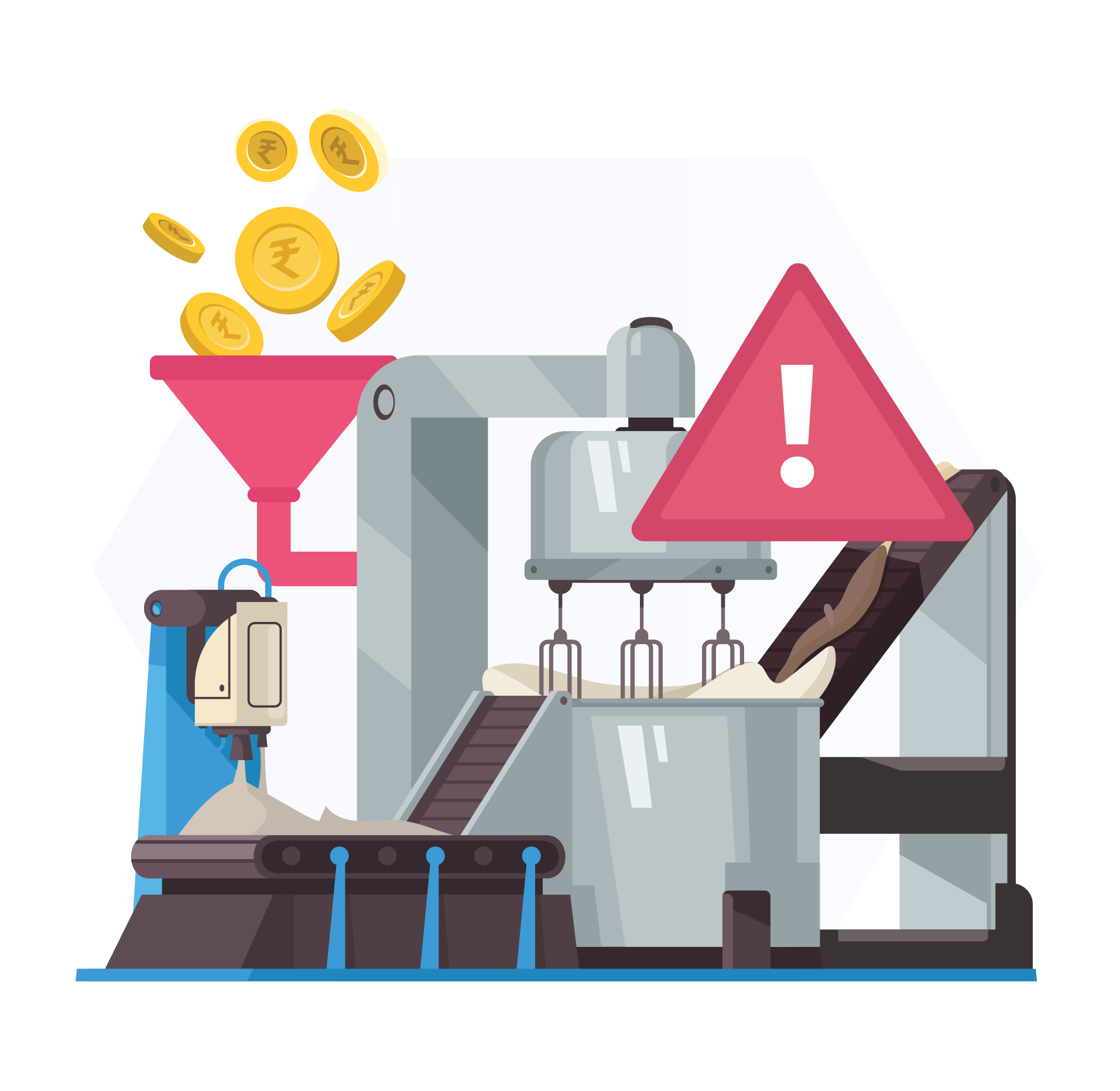Mistakes to Avoid in Machinery Finance for MSME Success
Modern machinery is crucial to driving MSME growth as it enables enterprises to increase productivity, improve their products’ quality, and stay ahead of the competition. However, acquiring essential machinery or updating existing ones can be a financial hurdle. This is where machinery finance proves to be a powerful tool, allowing MSMEs to access the equipment they need, without creating a dent in their working capital.
A machinery loan is a business loan specifically designed to help businesses finance the purchase of essential equipment. Unlike a traditional loan, machinery finance often features lower interest rates and can be secured with the equipment itself, reducing the need for additional collateral. While machinery loans offer numerous advantages, if an entrepreneur does not choose the loan carefully, it may prove detrimental to the business and its financial well-being.
Here are some mistakes you must avoid when getting machinery finance.
- Not Evaluating the Needs
The borrower must carefully evaluate their needs before exploring available machinery loan options. For instance, identify the kind of machinery you need since different equipment requires different investments. Businesses also often do not consider the production capacity and performance level required to meet their business goals or their future growth plans. These are important in determining if the loan amount will align with the necessary machinery.
Many enterprises also make the mistake of not vetting whether the loan amount, repayment terms, and schedule align with their cash flow. Before applying for finance, clearly identify the specific machinery you require, its intended purpose, and the capacity it should possess. This will help you choose the right financing structure for short-term needs, long-term ownership, or ongoing equipment upgrades.
- Ignoring Collateral Requirements
Many lenders require collateral, such as land or property, to secure the loan. A common mistake is not familiarizing yourself with the lender’s collateral requirements. You must ensure you have sufficient assets to meet these needs and avoid loan rejection. If the collateral is a no-go for you, explore alternative options and opt for loan schemes with more relaxed collateral requirements or for innovative financing structures that don’t require traditional collateral.
- Failing to Plan Ahead
Many enterprises also fail to envision future growth. You must not just focus only on immediate needs but also project your future growth plans and choose a financing option that allows for scaling up. Check if the equipment can be easily upgraded or if additional machinery might be necessary in the near future.
- Ignoring Hidden Fees
It’s tempting, and even natural, to be attracted by lenders’ lowest interest rate. However, as a borrower, you must look beyond the advertised number. Factor in processing fees, prepayment penalties, and other hidden charges that can significantly impact your overall cost. Ask lenders for a complete breakdown of all fees associated with the loan and take a decision after considering those completely.
To navigate it, compare lenders. Don’t settle for the first offer you receive. Look around and compare the terms, conditions, and overall value propositions from various lenders. Each may offer unique advantages like flexible repayment options or bundled services that can outweigh a slightly higher interest rate.
- Not Factoring in Training Costs
New machinery often requires specialized operation and maintenance training for your workforce. Overlooking these costs can lead to operational inefficiencies or even equipment damage. Be prepared and budget for the training required and factor it into your overall financing plan. Explore lenders offering combined financing packages that include both the equipment cost and training programs for your employees. This can help streamline the process and ensure your workforce is well-equipped to utilize the new machinery.
- Rushing the Application Process
The loan application process requires thorough preparation. There are many facets that need a keen eye. If you rush the process, your loan will be delayed and worse still, rejected. Here’s what you need to do to avoid delays:
- Gather documents: Don’t wait until the last minute. Collect all necessary documents beforehand, such as business plans, financial statements, ownership proofs, and any industry-specific licenses or registrations.
- Negotiate with the lender: Don’t hesitate to negotiate the loan terms, interest rates, and repayment schedules with the lender based on your financial situation and business projections. A clear understanding of your repayment capacity will put you in a stronger position to secure favorable terms.
- Not Consulting a Financial Advisor
Considering the complexities of machinery financing, seeking guidance from a qualified financial advisor can be invaluable. An advisor can analyze your specific needs, assess your financial health through CIBIL score check and more, and recommend the most suitable financing options. They also have the market knowledge of the latest trends in machinery financing, government schemes, and alternative funding avenues. Experts can also assist you in negotiating with lenders to secure the best possible terms and avoid hidden costs.
Conclusion
By avoiding these common pitfalls and taking a well-informed approach, machinery financing can be a powerful tool for taking your MSME to new heights. Remember, meticulous planning, careful research, and a willingness to negotiate will pave the way for a smooth financing experience. If all this seems overwhelming, reach out to an advisor to get a solid plan.

